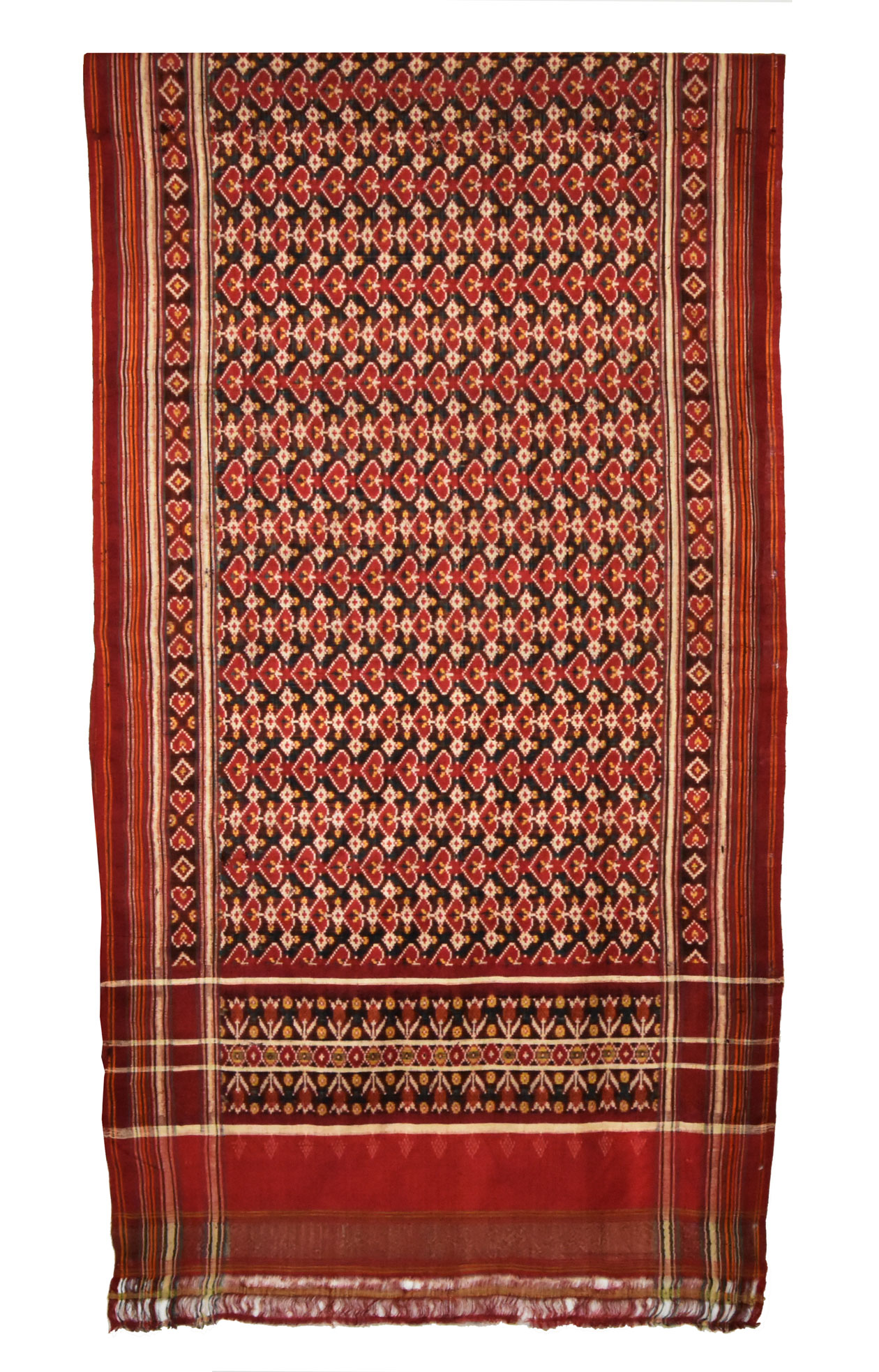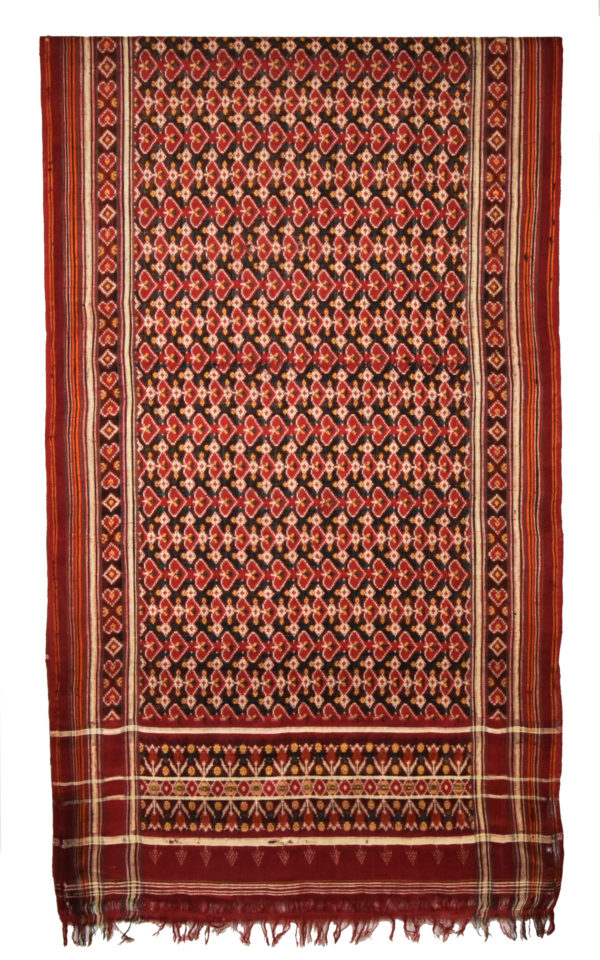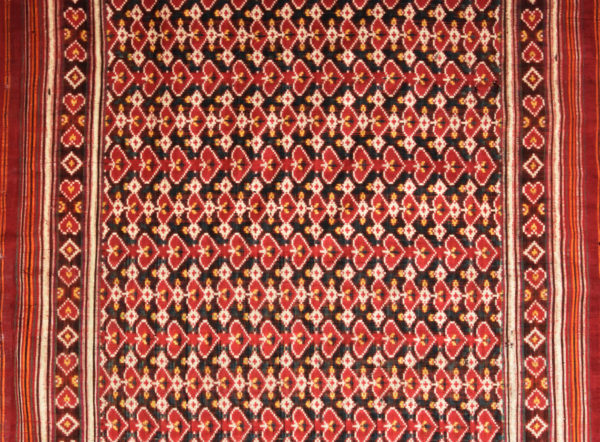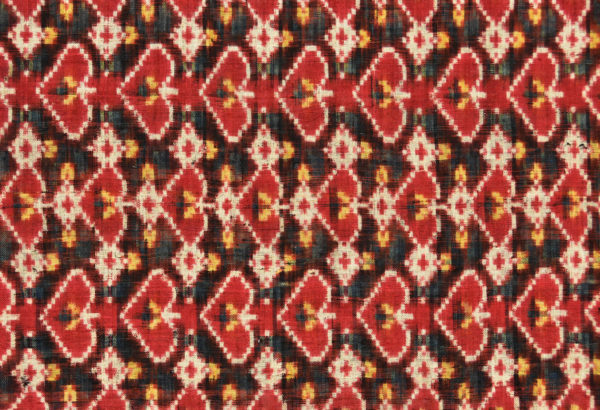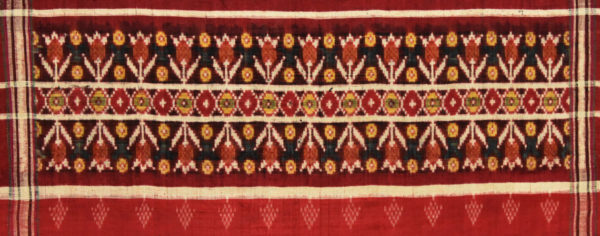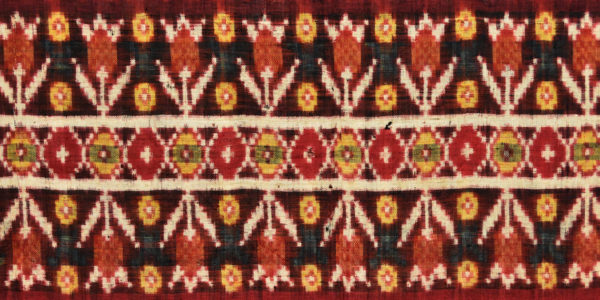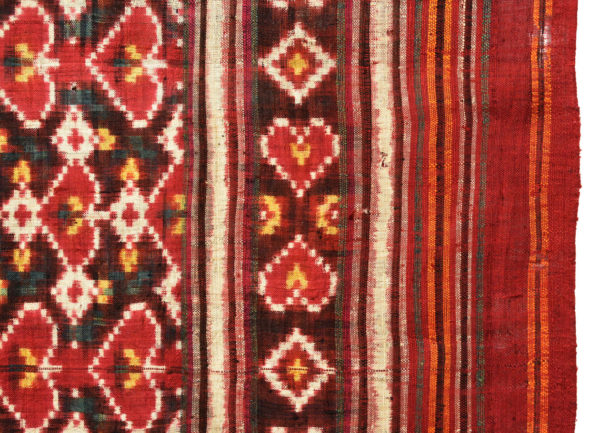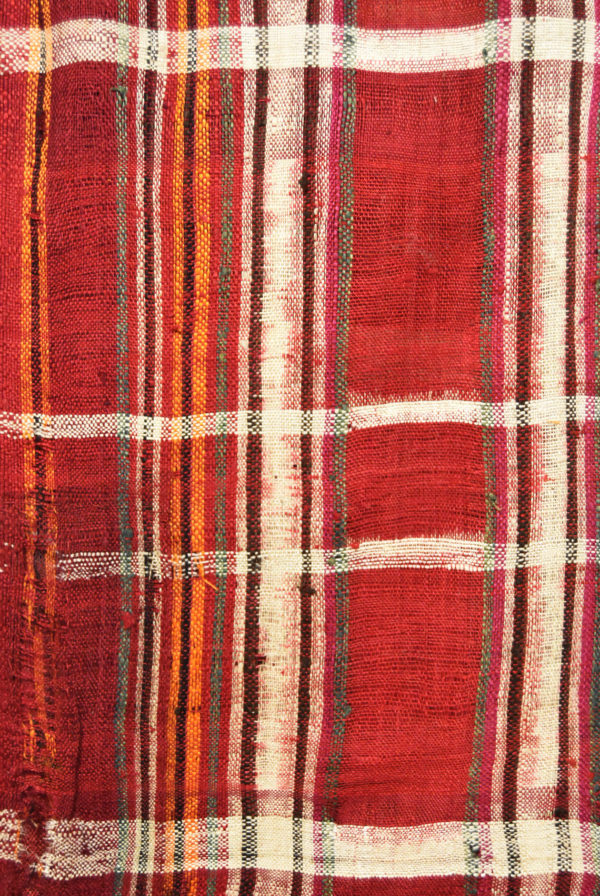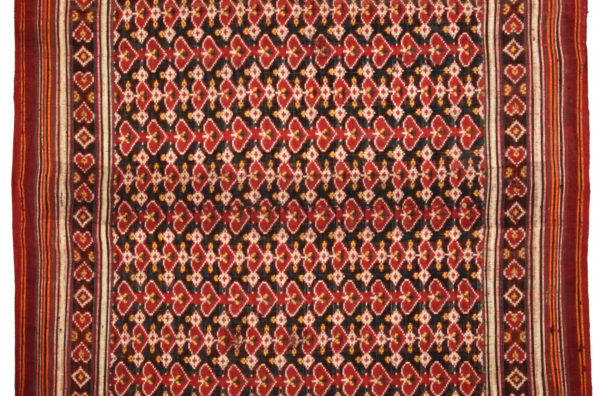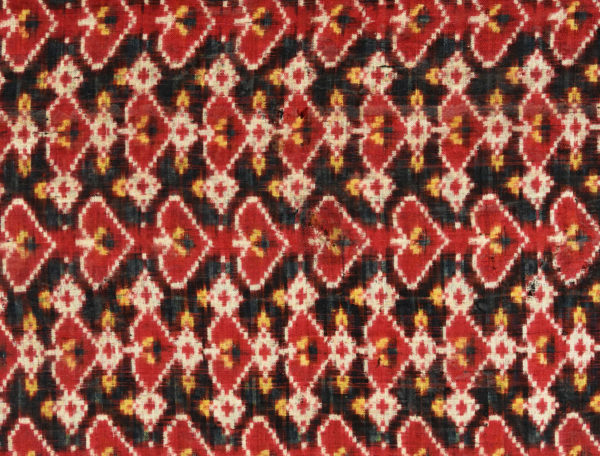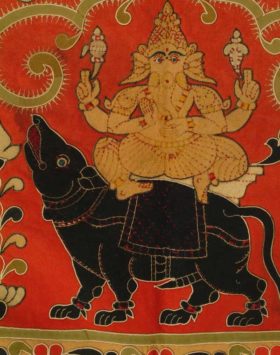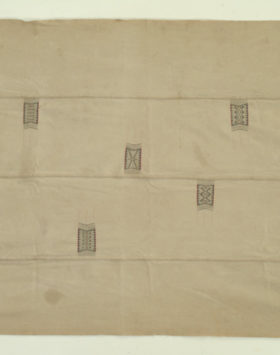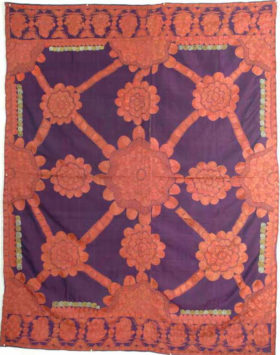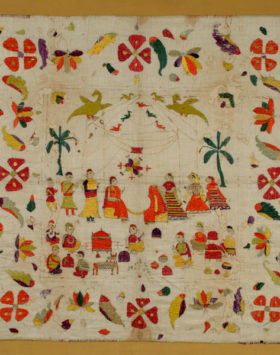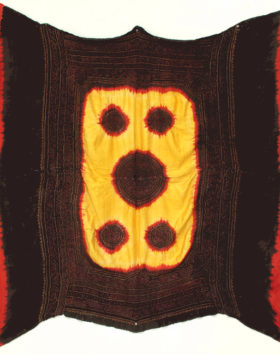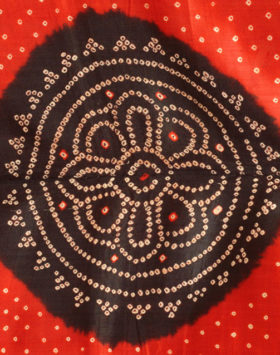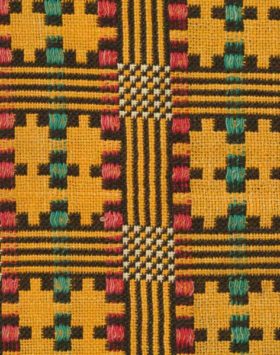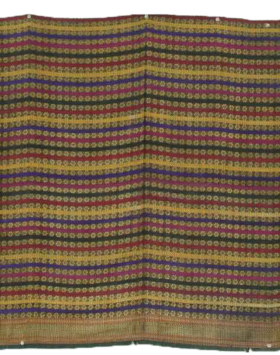Patola Saree
Patola saree from Gujarat, West India. Patola is the name for double ikat produced in India and used locally or exported to Indonesia. The ikat method involves tying and dyeing of the yarn before it gets woven. It is easy to identify by the bleeding edges between the colors. Another telltale sign is the fact that ikats look the same on both sides. Warp ikat is the most common, weft ikat less so and double ikat, when both warp and weft yarns are tie-dyed, the most complicated as the weft needs to be aligned to the registry after each yarn is in place.
Silk weavers of the Salvi caste from the states of Karnataka and Maharashtra settled in Gujarat and brought the patola technique with them. It is believed that the Salvi caste weavers went to Gujarat in the 12th century with the intention of acquiring the patronage of the Rajputs who ruled all of Gujarat and parts of Malva and Southern Rajasthan, with Patan as the capital. The ruler dressed in Patola silk on special occasions. Patola sarees soon became a sign of social status among Gujarati women and girls.
Two persons are involved in the process of weaving Patola. Only four to six inches of fabric is woven in a day, as the coordination of threads of both axes is an extremely skilled and time-consuming job.
Circa: 19th c.
Origin: India
Material: Silk
Condition: Good antique condition, minor holes, backed with silk net.
Dimensions: 42" x 144"
Inventory number: TX4809
$3,850
SOLD
Call: (646) 370-6801
E-mail us: yosi@sarajo.com
